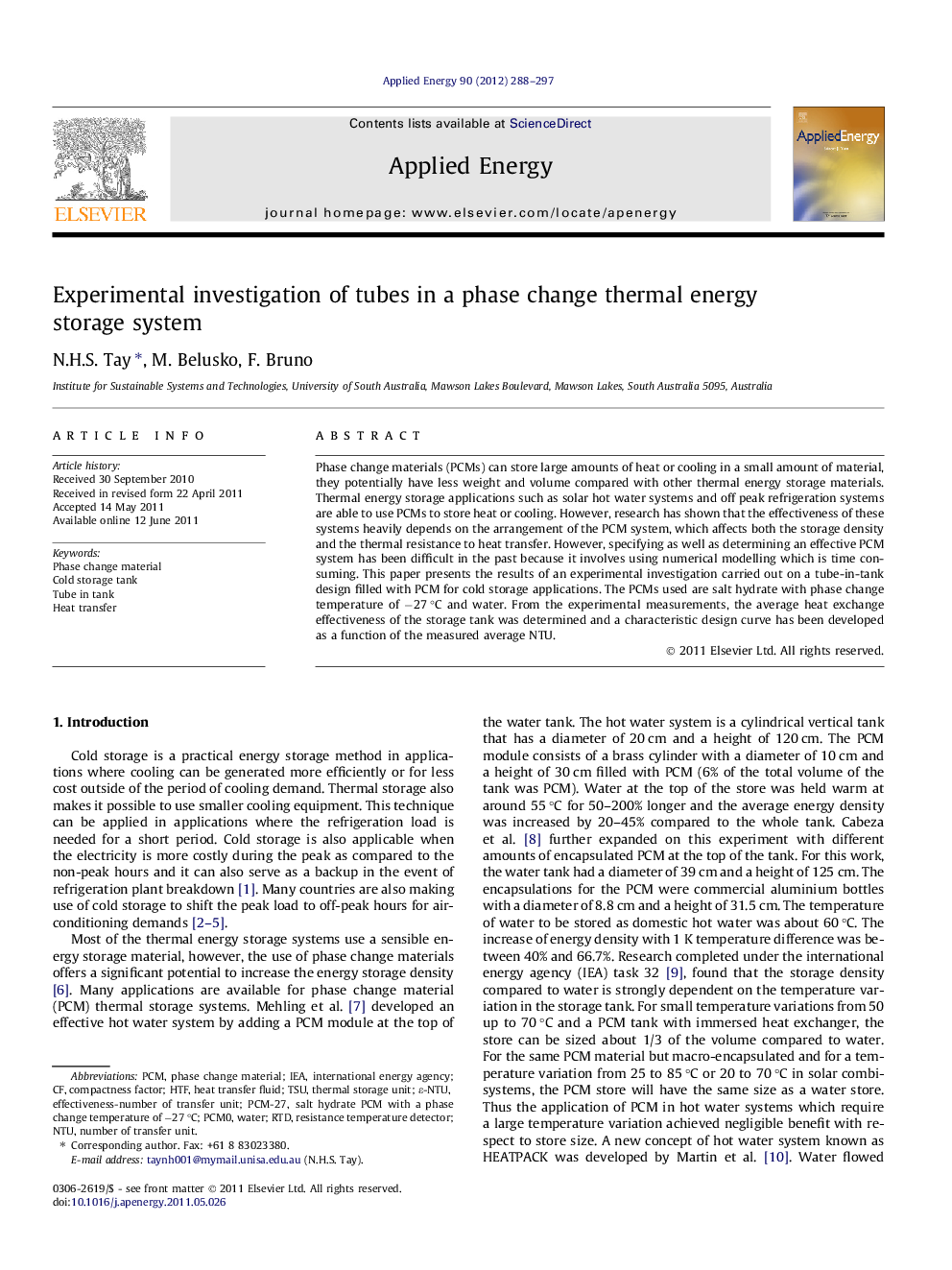| Article ID | Journal | Published Year | Pages | File Type |
|---|---|---|---|---|
| 243937 | Applied Energy | 2012 | 10 Pages |
Phase change materials (PCMs) can store large amounts of heat or cooling in a small amount of material, they potentially have less weight and volume compared with other thermal energy storage materials. Thermal energy storage applications such as solar hot water systems and off peak refrigeration systems are able to use PCMs to store heat or cooling. However, research has shown that the effectiveness of these systems heavily depends on the arrangement of the PCM system, which affects both the storage density and the thermal resistance to heat transfer. However, specifying as well as determining an effective PCM system has been difficult in the past because it involves using numerical modelling which is time consuming. This paper presents the results of an experimental investigation carried out on a tube-in-tank design filled with PCM for cold storage applications. The PCMs used are salt hydrate with phase change temperature of −27 °C and water. From the experimental measurements, the average heat exchange effectiveness of the storage tank was determined and a characteristic design curve has been developed as a function of the measured average NTU.
► An experimental investigation was initiated to investigate the thermal resistance in thermal storage systems. ► These systems comprise of phase change materials and tubes filled with heat transfer fluid. ► The merits of the ε-NTU concept for this case was also investigated and found to be applicable. ► Experimental results proved that a tube-in-tank system delivers a very high energy storage density. ► An empirical relationship has been determined to predict the effectiveness and other design parameters for these systems.
